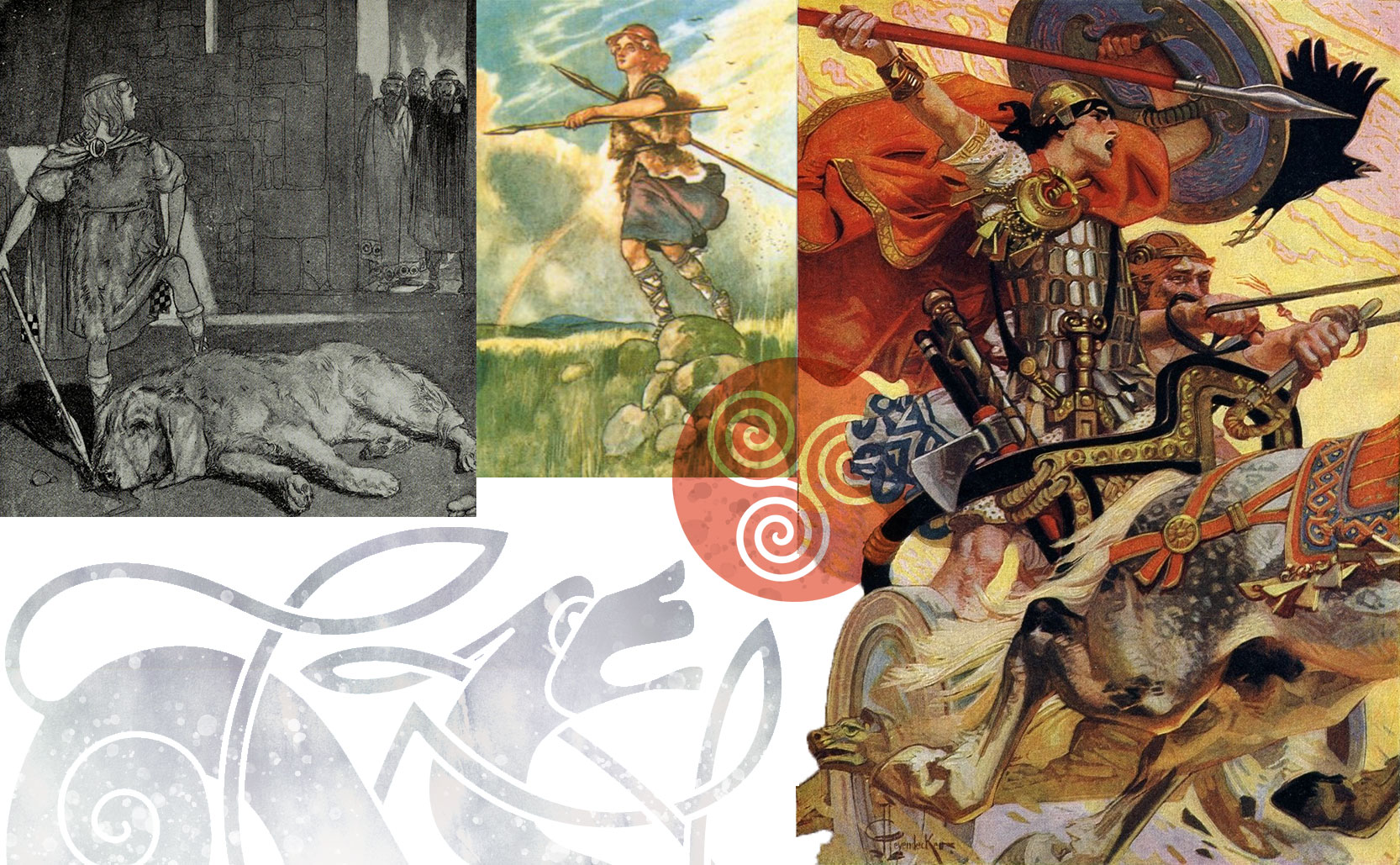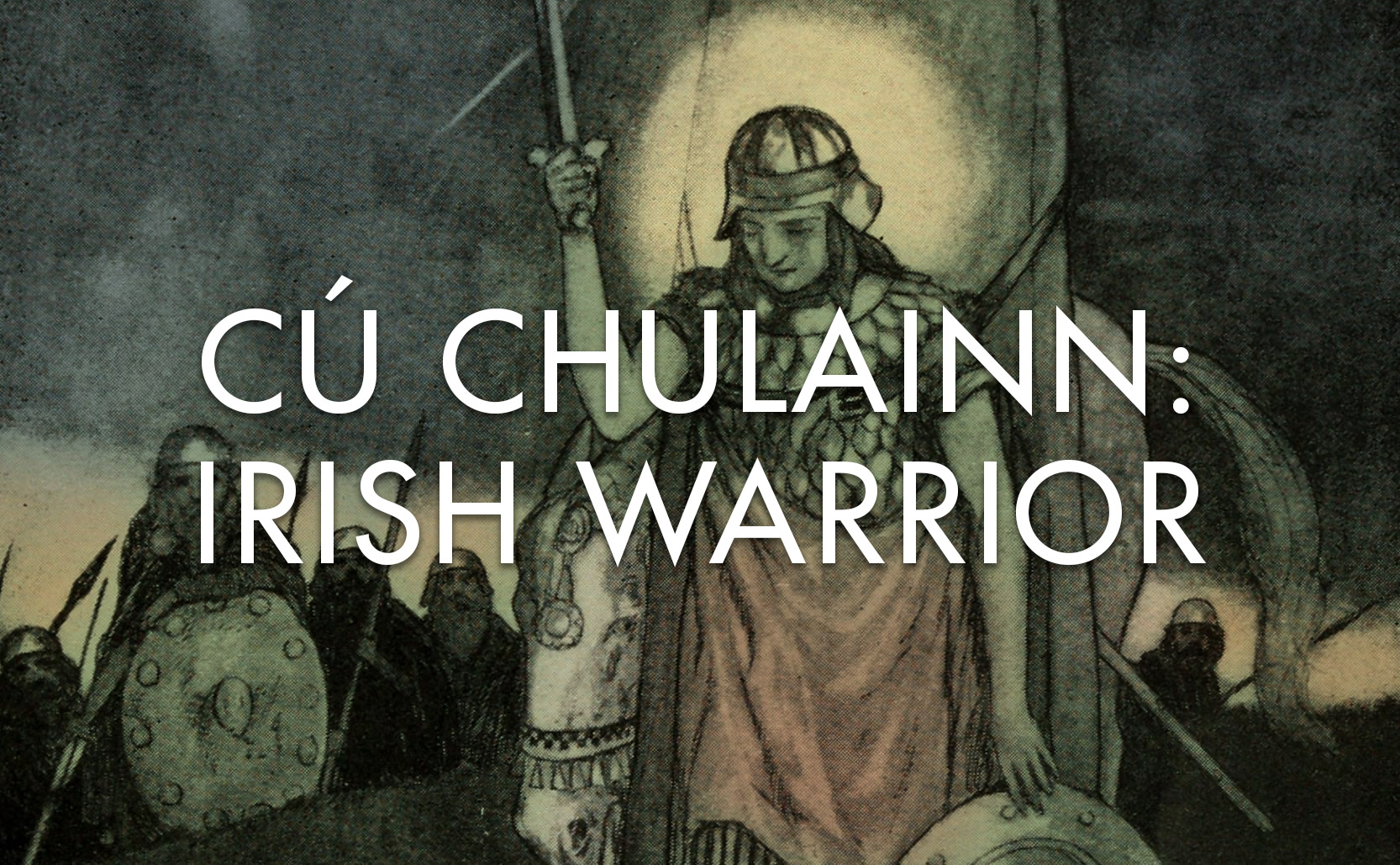Cú Chulainn: Irish Warrior
The mythic Irish figure who lived fast, died young, and could warp into a Hulk-like warrior monster.
Cú Chulainn is a legendary figure in Irish mythology. While there are numerous variations of his name (Cuchulain, Cuchullin, Cuchulinn, etc.) there are even more variations of his life story. Cú Chulainn (‘Koo KUL-in’) was said to have lived somewhere between the 1st century BCE to 1st century CE in the kingdom of Ulster in the north of Ireland. His tale was a part of the oral storytelling tradition, changing and growing over the years, so by the 7th century when it was recorded by Sechan Torpeist, there were numerous versions.
Differences in his story aside, the basics are that Cú Chulainn was born to a mortal woman, Deichtine, sister to Conchobar mac Nessa the king of Ulster, while his father was the god Lugh (whom the County of Louth is named after). This makes Cú Chulainn a demigod and like other demigods in folklore he had superhuman abilities & looks. He was said to have hair that was three different colors, he had four colored dimples in each cheek, as well as seven pupils per eye, seven fingers per hand, seven toes per foot. In spite of these unusual features (or perhaps because of them) he was considered exceptionally handsome.
As a child, in an early display of his warrior abilities, a wolfhound ran to attack Cú Chulainn but in self-defense he used his hurley to hit a ball down the dog’s throat, eventually killing the dog with his hands. Feeling bad for killing Culann the metalsmith’s dog he offered to take the dog’s place in guarding Culann’s property. This is how Sédana (to add yet another name to his story) became Cú Chulainn. “Cú” means hound and “Chulainn” was the name of the metalsmith – so “Culann’s hound”. In a way Cú Chulainn was named after the dog, like Indiana Jones.
At the age of seven Cú Chulainn heard the druid Cathbad discussing a prophecy that any warrior who took up arms that day would have everlasting fame. Desiring fame & glory Cú Chulainn went to his uncle the King to request a weapon. Unfortunately Cú Chulainn failed to hear the second part of the prophecy which stated that this famous warrior would also have a very short life.

Unleash the beast
Like other demigod warriors, Cú Chulainn had an unmatched prowess in battle. Part of his secret to success was his ability to go into a ríastrad or “battle frenzy/spasm” where he would physically transform like Dr. Jekyll into Mr. Hyde or Bruce Banner into the Hulk, but with more of an H.P. Lovecraft feeling.
Driven by rage his body would contort so his feet and shins turned backwards, his one eye would recede into his head while the other would dangle out, his hair became like spikes, his lungs and liver were somehow visible in his mouth, all while his forehead leaked blood. He became a monstrous killing machine, indiscriminately slaughtering anyone (including allies) who crossed his path. Once the fighting was over he would return to his beautiful, beardless, youthful human form.
Warrior Legend
Cú Chulainn’s superhuman speed, agility, his monstrous ríastrad form, and his good looks led him to many adventures. He trained with Scáthach on the Isle of Skye in Scotland, he got recruited into fighting demons in Tír nAill (the magical “Otherworld”), he accidentally killed his own son, many women (human and magical) fell in love with him, he defended Ulster by single-handedly holding back the army of queen Medb in the Cattle Raid of Cooley, won contests, bested his foes, etc.
Despite his extraordinary abilities Cú Chulainn couldn’t escape that he was cursed to die young. Having slain so many men he understandably made a lot of enemies including the shape-shifting goddess The Morrígan (the magical “phantom queen” who may be three sisters or just one woman in multiple forms). Eventually he was brought down by his various enemies conspiring against him. Towards the end of his final battle Cú Chulainn tied himself to a standing stone (with rope or with his entrails) so he could die on his feet. After the final blow was dealt the surrounding army was afraid to approach him, unsure if he was really dead. A raven (The Morrigan in Badb bird form) landed on his shoulder proving that Cú Chulainn the legendary warrior had died – at 27 years old.
Symbol of Nationalism
The story of Cú Chulainn, the heroic Irish warrior, has served as inspiration over the centuries. In the early 20th century there was renewed interest in Cú Chulainn as part of the Celtic Revival where he became a part of the Irish nationalism movement. That he would tie himself to stay upright and continue the fight against a seemingly intractable enemy became symbolic of the republican movement for national independence and the fight against England. In 1935 Éamon de Valera chose the Oliver Sheppard statue The Death of Cuchulainn for the national memorial to the 1916 Rising. Today the statue can be seen inside the General Post Office, O’Connell Street, in Dublin.


